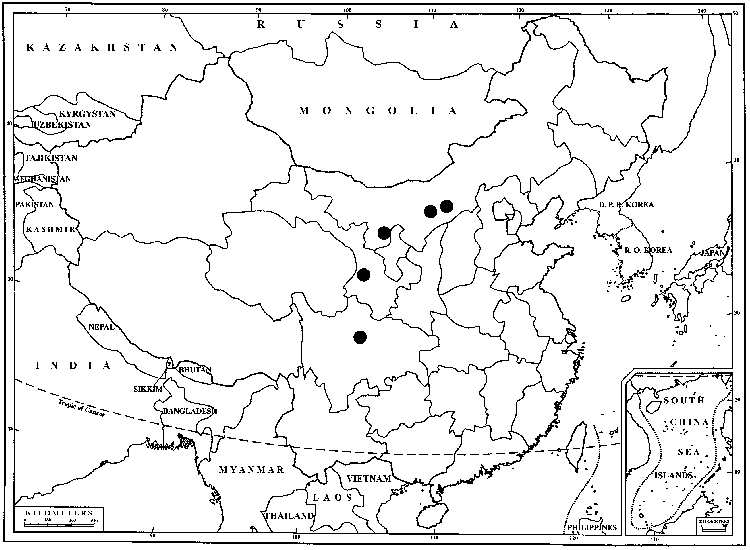Crossidium squamiferum
Laubm.-Fl. Oesterr.-Ung., 127. 1882 (as squamigerum),.
Plants 6–10 mm. Leaves deltoid-ovate, oblong-ovate or lanceolate, 0.6–2 mm, margins recurved to erect distally, usually undifferentiated, apex obtuse or rounded, serrulate, with abaxial papillae, piliferous; costa excurrent, with an inconspicuous abaxial epidermis, filaments of 4–10 cells, cells cylindric to subspheric, [thick-walled], terminal cell rectangular, subspheric or conic with 2–5 solid papillae; cells of leaf base 11–70 µm, medial and distal cells 9–33 µm, smooth, thick-walled. Sexual condition gonioautoicous. Seta 5–20 mm. Capsule urn short-cylindric to ovoid-cylindric, 1–2.7 mm; operculum 0.6–1.1 mm; peristome short, nearly straight, cribose at base to long and strongly twisted, 198–1160 µm. Spores spheric, 9–22 µm.
Distribution

North America, nw Mexico, Europe, Asia (India), n Africa, Atlantic Islands (Canary Islands)
Discussion
Varieties 2 (2 in the flora).
Selected References
None.
Key
| 1 | Capsule ovoid-cylindric with a long and twisted peristome; operculum long-rostrate | Crossidium squamiferum var. squamiferum |
| 1 | Capsule cylindric with a short, cribrose peristome; operculum conic | Crossidium squamiferum var. pottioideum |
"broad" is not a number."um" is not declared as a valid unit of measurement for this property.